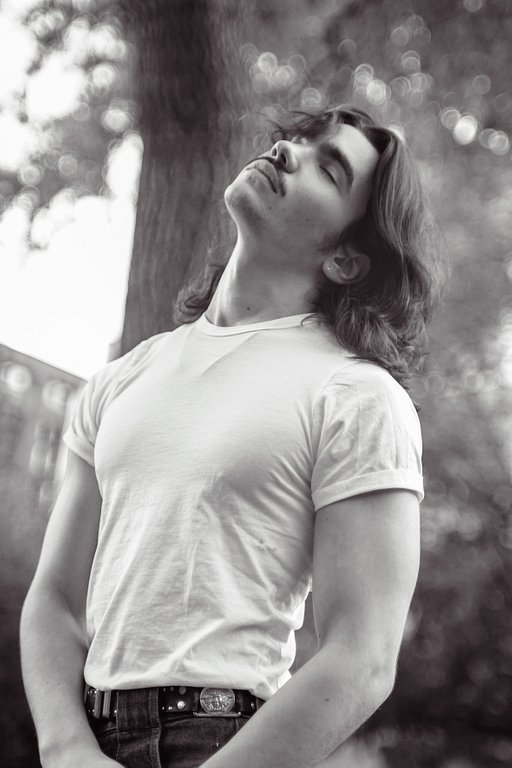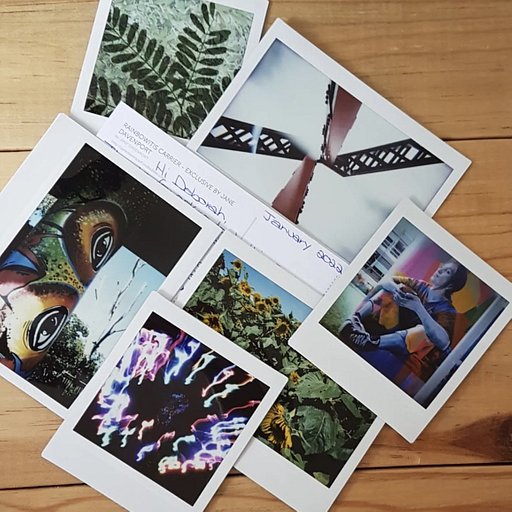The Importance of Connection — an Interview with Anna Försterling
35 Share TweetAnna Försterling is a photographer based in Germany who specializes in portraiture and fine art photography. Her timeless photographs exploring the ideas of intimacy and beauty of the human body are the kind of images that you'd need a bit of time to take in and marvel at. She's a firm believer in making a connection with her subjects and it shows in her work. There's just a certain level of emotion, artistry, and intensity to her minimalist style that is rare nowadays. In this interview, we talk to her about her work and how she manages to say so much with so little.
Hi, Anna and welcome to the Lomography Magazine! What do you do and what got you started on your photography journey?
I am a photographer and like to photograph people on analogue film. Portraits and nude photography are part of my heart affairs. I have been photographing for about nine years and I started with macro photography of small animals and plants. This fascinated me so much that it didn't take long until I bought myself better photo equipment to take even better photos. Then I decided to become a professional photographer and looked for apprenticeships.
At first, things didn't work out to get my desired education but one year later I finally started school. That was in 2014. This time was very important for me because in school I got to know more about analogue photography and it's also where I trained myself artistically. Suddenly, I only wanted to photograph people instead of animals and was very inspired by the photo artists of the 70s and 80s. They still inspire me today but my greatest source of inspiration is music. Since then I have been fascinated by human photography and I almost exclusively shoot portraits and nudes now. In 2017 I successfully completed my training. Since then I have been working part-time in a photo lab and am otherwise self-employed.
Why choose film photography in your work?
Film is just magical. I can't explain it exactly but somehow I have the feeling that I can better transport my feelings and emotions as well as stories with this medium. But film is also more than just the end product, i. e. the photo. Film is a whole process up to the finished picture. By this, I mean that one starts to photograph quite differently if one can only photograph a limited number of pictures. You tend to think more about it and there are no great decision questions in the final image selection. You can also concentrate better on the person in front of the camera while taking pictures because you don't look at any display, you don't get distracted. I think that strengthens the connection between model and photographer. In addition, there is also a strong bond between the photographer and his pictures, the negatives. Because he still has to develop his pictures and the anticipation rises to the immeasurable! For me, this is just magical, comparable to Christmas and unwrapping presents.
For me, a portrait on film is more sensitive and stronger than a digital portrait. It's not about any digital/analog religions, I'm just talking about my feelings. And I also have an assumption: I think that an organic material like film can better represent an organic subject like a human being. It can transport feelings and emotions better than a cold inorganic sensor.
How did you discover that shooting with film was for you?
During my training, I had the opportunity to try out and shoot with many different camera systems — analogue as well as digital. In addition, we had a laboratory in our training center for developing films and for positive development on paper. It's handy if you have a teacher with you who explains and shows you everything. So my entry into analog photography was very easy and practical. Meanwhile, I already bought my own analogue cameras (35 mm and medium format) and experimented with them. If you have fun with analogue photography, the possibilities are almost endless!
Your portrait work is just stunning. How do you come up with your concepts?
I like to be inspired by music and my environment. But most of all, through music. Rock music from the 60s to the 90s, grunge, and metal. Occasionally also classical music when I sit down at my piano. But unfortunately, this has become a little rarer again. If I have an idea, I have to write it down or sketch it somewhere. However, sometimes new ideas come during the photographing process — be it through the model, the scenery, location or the light.

What would you like to get across with your work?
I would be happy if one could simply enjoy my photography and/or recognize that the female body is so versatile! It's not about eroticism, clothes just distract from the essentials. Skin is such an important organ for me. It's the other organ that shows the soul aside from the eyes. And in my portraits, I want to show as much soul as possible.
We love how you tastefully showcase the beauty of the female form. It's empowering and full of emotion at the same time. How did you develop this style of shooting?
A difficult question, I guess that's just my way of looking at people. But of course, the handling of the different design elements such as light and shadow as well as a sense for the scene also plays a role. The most important thing, however, is dealing with people in front of the camera — what kind of connection you can establish and of course, whether everyone feels comfortable. The slightest disturbance would probably ruin everything.
How do you build a relationship with your models?
The most important thing is to first establish a connection and this is the best and easiest achieved with speeches! As a photographer, it is also very easy as you can easily find an opening by talking together about ideas and implementation of the project, what is important about it, and where the comfort areas for the model. If there is an interest in the model (by the way it is always more advantageous to work with people who are interested in their own style and - in my case, film photography), you can also explain the camera technique and how everything works. So far, everyone's been over the moon about it! And then you start to talk about private things as if you are by yourself. During the shoot, I always ask if everything is ok, whether the person still feels well or if a short break is in order.
I always work with a concept in mind and explain it to the model. As a result, I give precise instructions on posing, posture, expression, and placement in the location. This prevents the model from feeling uncomfortable because they don't know what to do in front of the camera (I sometimes work with people who are inexperienced in front of the camera). This point is very important because if the person in front of the camera is insecure and you can't give him security because you lack the instructions, the photos will not be good.
Of course, you can do it differently, the most important thing is that the photographer and the model know how they both work and then work with it. Many photographers shoot spontaneously and achieve great results.
In your opinion, what makes a good photograph? Do you need the best gear to put out quality content?
You know the answer: of course not, the best equipment is pointless if you can't handle it. One can create ingenious photos with the simplest means, the secret recipe is to know one's technique and above all to think about the image content and the image design. What is the use of a technically perfect photo if it is deadly boring? For me, a good photo is something that fascinates me and makes me want to look at it for a long time. Be it because of an emotion that I recognize or feel or because of complex, ingenious picture design. Or because the light is brilliant! I always get stuck with pictures that have great or interesting light.
I always choose my camera technology according to my idea. For example, if I want to take moving photographs, I leave my large format camera at home and pack my 35 mm camera instead.
What would you say is the most important thing about taking photographs?
Well, fun and inspiration. Without that, it's kind of just pointless.
What does a perfect day look like for Anna Försterling?
Sleep late, eat muesli, listen to music for breakfast, enjoy the sun outside in nature or do anything else outside, lunch with music, cuddle my cat, play computer games, go to family or friends for coffee, watch a movie in the evening with popcorn and listen to music to fall asleep. Something kind of like that or maybe in a different order. ;-)
Do you have upcoming projects? Please invite our readers.
I have not yet planned any projects for 2020 but I would like to revive other areas of my creativity, including drawing and playing the piano.
Any last words?
Don't let anyone tell you what's right and what's wrong in artistic photography because that doesn't exist. Do not let yourself be controlled by technology. Have control over technology and focus on your vision and design.
We would like to thank Anna for letting us feature her images in the Magazine. If you're interested in her work, you may visit her website and Instagram for more.
written by cheeo on 2020-01-21 #culture #people #black-and-white #interview #monochrome #analogue #artist #nude #portraiture #talent #anna-forsterling
































No Comments